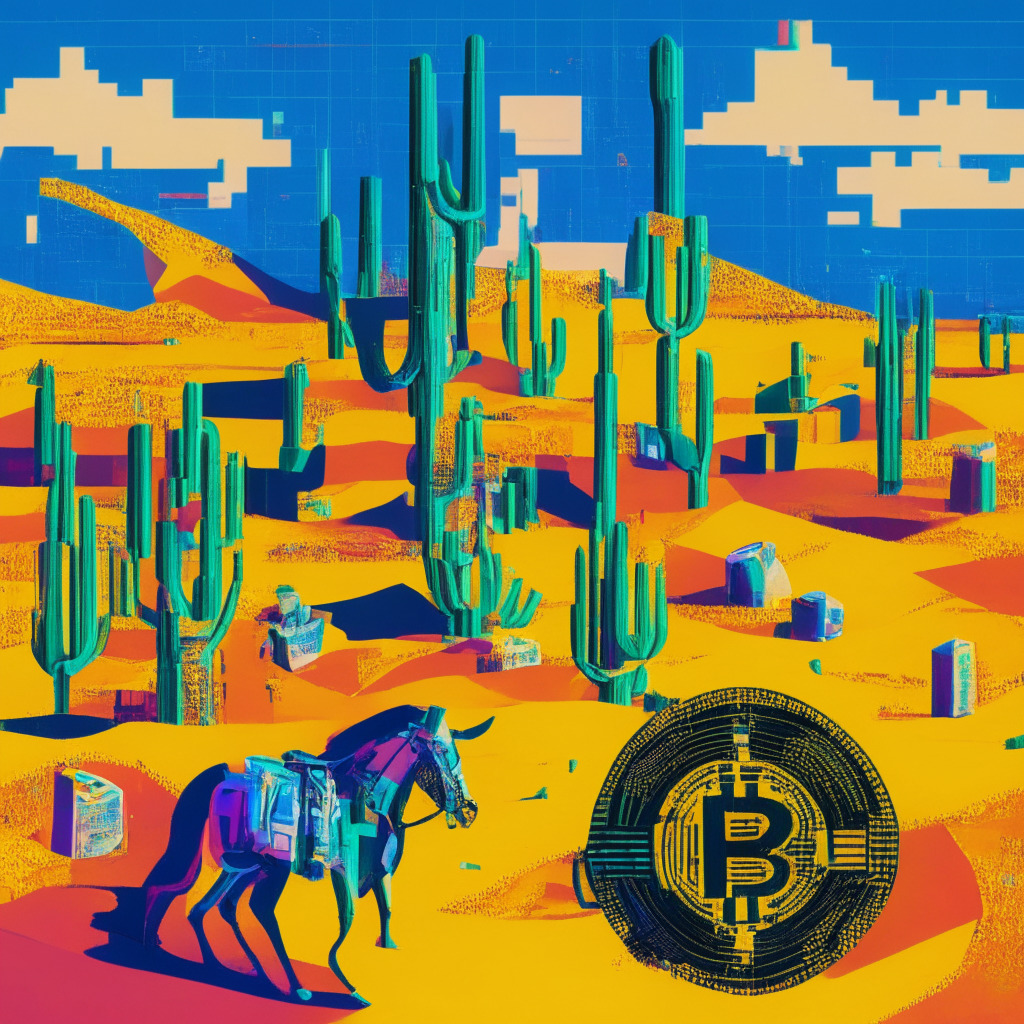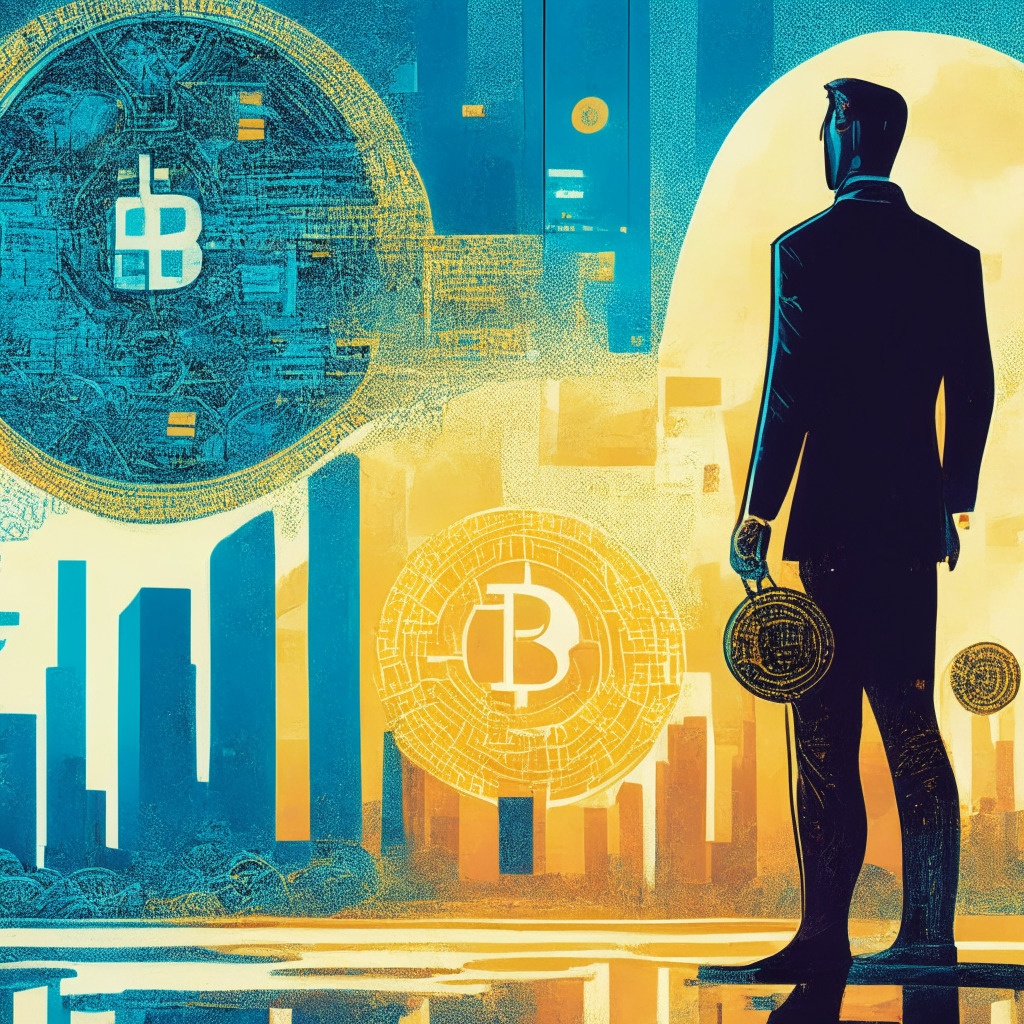The U.S. is still in the “basic research” phase of developing a central bank digital currency (CBDC), according to Federal Reserve Vice Chairman, Michael Barr. He highlighted the importance of gaining backing from legislative bodies, addressing risks posed by stablecoins, and establishing a competent regulatory framework before proceeding with any initiatives.
Search Results for: Tokenization
Redefining Value: The Digital Frontier of Tokenized Real-World Assets
“Tokenized real-world assets are becoming mainstream with firms like Coinbase, Circle, and Aave forming the Tokenized Asset Coalition to promote the transition to decentralized finance. Predictions estimate tokenized assets reaching $16 trillion by 2030. Meanwhile, key financial entities globally are considering or offering crypto-related services, signifying a pivotal switch in financial systems.”
Navigating Regulatory Hurdles: CFTC Member Advocates for Cryptocurrency Pilot Program
CFTC’s Caroline Pham advocates for a pilot program to oversee cryptocurrencies, aiming to stimulate the growth of digital asset markets. Besides facing resistance from current CFTC leadership, the crypto industry’s future is uncertain due to regulatory skepticism and Congress bills’ fate.
Exploring the Rising Star of Cryptocurrencies – Chainlink vs. Launchpad.xyz: Potential Gains and Risks
Chainlink’s (LINK) price has increased due to its partnership with Swift’s Cross-Chain Interoperability Programme in tokenization trials. This partnership, along with other positive drivers, like integration with Balancer, predicts a robust upward trajectory for LINK in the cryptocurrency market.
Fostering Adoption of Traditional Assets on Blockchain: The Role of the Tokenized Asset Coalition
Crypto industry leaders, including Coinbase and Circle, form the Tokenized Asset Coalition to spur adoption of traditional financial assets on blockchain. The coalition’s aim is to bring the “next trillion dollars of assets” to blockchain technology through education and advocacy, fostering the adoption of public blockchains, asset tokenization, and institutionalized decentralized finance (DeFi). This initiative predicts a more efficient, cost-effective, and transparent system with the adoption of tokenized assets.
Asset Managers Unfazed by Volatile Cryptocurrency Markets: Survey Reveals Bold Predictions
Despite the uncertain regulatory environment and sluggish cryptocurrency markets, nearly 50% of American and European asset managers surveyed by Coalition Greenwich and Amberdata are active in digital assets. The survey reveals optimism in the industry’s future, with 40% expecting 11% annual growth and 25% of firms having a distinct digital assets strategy. Potential opportunities are seen in ETFs, tokenized securities, and centralized exchanges.
Unleashing AI in Blockchain: The Future of DAOs or a Digital Divide Catalyst?
“Co-founder of Framework Ventures, Vance Spencer, suggests that AI could bring true “autonomy” to DAOs and envisions AI models becoming valuable on-chain assets. While this potential convergence of AI and blockchain holds promise, it also raises concerns about maintaining human oversight and preventing further digital divide.”
Decoding the Complex World of Blockchain through Solana’s Lens: Real-World Solutions and Challenges
Raj Gokal, co-founder of blockchain protocol Solana, is addressing blockchain scalability through decentralized physical infrastructure networks (DEPIN). He emphasizes well-thought-out factors to create a scalable blockchain system. Despite challenges in industries such as real estate, Solana is working towards stable and reliable Web3 infrastructure, critical for institutional adoption. As industry practices evolve, the blockchain future becomes increasingly tangible.
Blockchain Future: SWIFT’s Masterstroke with Chainlink for Secure Financial Interoperability
“SWIFT has plans to use Chainlink’s Cross-Chain Interoperability Protocol to connect multiple networks, thereby creating a unique financial system for users. The importance of interoperability is fundamental in today’s digital financial system, where increasing blockchains and tokenization could cause fragmentation. With SWIFT’s strategy, the aim is to make investing more inclusive and affordable.”
Swift’s Blockchain Integration vs Central Bank Digital Currencies: A Comparative Analysis
Swift’s recent report asserts that short-term blockchain integration is a more feasible solution for market development than unifying Central Bank Digital Currencies and tokenized assets on one ledger. It suggests that connecting existing systems with blockchains addresses interoperability issues between diverse blockchain networks, improving efficiency and user experience.
Unraveling the Collaborative Success of Swift and Chainlink: Global Impact and Potential Flaws
“Swift and Chainlink have channeled tokenized value over public and private blockchains, potentially aiding in the global growth of tokenized asset markets. Their experiment included partnering with several financial corporations to connect them with various blockchain networks. The possibility of tokenization’s massive potential required their smooth cooperation with the whole financial ecosystem.”
The Evolution of Total Value Locked (TVL) in DeFi: The Impact of Tokenized Real-World Assets
As decentralized finance or DeFi matures, the concept of total value locked (TVL), which represents the amount of money in a specific protocol, now includes tokenized real-world assets (RWAs), broadening understanding of on-chain assets. RWAs, including private equity, mortgages, and illiquid funds, are now incorporated within this framework, making DeFi more appealing to large-scale investors. However, limited availability of segmented and classified RWA TVL data remains a challenge.
Blockchain Revolution: Unraveling the Power of Web3 for Financial Sovereignty and Data Privacy
“Blockchain is steering a ‘digital sovereignty’ revolution through the principle of decentralization and Web3. It aims to disrupt conventional infrastructure and restore trust in traditional institutions by combating grave cybersecurity threats and enabling control over personal data. Moreover, blockchain products like cryptocurrency and tokenization could potentially transform our digital interactions and transaction methods.”
EOS Gains Ground in Japan: An Underdog Cryptocurrency’s Resurgence and Its Implications
The EOS Network has received endorsement from Japan’s cryptocurrency authority, granting EOS token rights for trade against the yen on Japan’s regulated cryptocurrency exchanges. EOS Network Foundation CEO, Yves La Rose, views this as a unique opportunity for EOS to grow within a regulated market known for stringent transparency. This development also opens up potential for game tokenization, an untapped sector in Japan.
EOS Gets Regulatory Approval in Japan: A Milestone for Crypto or a Threat to Anonymity?
EOS, a globally acclaimed cryptocurrency, has gained regulatory approval in Japan, allowing it to be traded against the Japanese yen on regulated exchanges. This marks EOS’s debut on the Japanese exchange BitTrade, highlighting the continued significance of the Asian market to the digital token’s growth. However, while exciting, regulatory acceptance raises questions about possible impacts on anonymity and decentralisation.
Blockchain Partnerships: Unlocking Potential for Traditional Companies and Navigating Pitfalls
“Traditional companies partnering with blockchain projects can enhance transparency, improve efficiency, control workflows and access new communities. These collaborations could bring competitive advantages and new revenue opportunities. However, navigating volatility in the Web3 market is challenging, making long-term alliances more preferable.”
USTY Tokens: Revolutionizing the Financial Sector Despite Intense Rivalries and Market Volatility
“USTY tokens, a tokenized version of shares in a U.S. Treasury bond ETF, are the prime example of the tokenization of real-world assets. This transition towards tokenization could create a $5 trillion market within five years. Despite challenges, tokenization has potential to transform financial infrastructure, backed by nearly sixfold increase in demand for tokenized Treasuries to $622 million this year.”
The Rise and Fall of Friend.tech: Lessons from the Crypto Frontier
Friend.tech, a blockchain-based social app that allows users to trade cryptos linked to Twitter influencers, saw a rapid decrease in inflow and volumes, hinting at issues in the decentralized platform’s operations. Its initial success was overshadowed by a severe privacy breach, leading to skepticism and withdrawal.
Central African Republic on Track to Tokenize Land: A Blockchain Leap or Misstep?
The Central African Republic is making waves in the crypto world by tokenizing its land and resources on the Sango blockchain platform. This innovative approach includes the use of technology for citizenship acquisition, land ownership, and diverse investments, thus enticing potential investors and promoting a “new era of financial empowerment through blockchain technology”.
Australia’s Tentative Steps Towards Central Bank Digital Currency: Hopes and Hurdles
The Reserve Bank of Australia (RBA) and the Digital Finance Cooperative Research Centre’s study determined that the introduction of a Central Bank Digital Currency (CBDC) may not occur for several years in Australia due to numerous unresolved issues. The research viewed CBDC as a complementary tool to private sector innovation rather than a replacement, supporting offline electronic payments, facilitating transactions, and reducing costs.
Navigating the CBDC’s Challenges and Potential: A Glimpse into Australia’s e-AUD Experiment
The Reserve Bank of Australia’s pilot program for a Central Bank Digital Currency (CBDC) has explored potential benefits and challenges of tokenized currencies such as an e-AUD. The program highlighted opportunities for financial innovation and resilience in the digital economy, but also demonstrated legal ambiguities and uncertainties surrounding CBDC use.
Blockchain vs Traditional Payments: A Detailed Analysis of Utility, Constraints and Potential
Cross-border payments demonstrate the utility of digital currencies, yet adoption faces challenges like technological issues, competition, and regulatory constraints. Blockchain Officer, Paul Brody, suggests basic fiat payments are faster and cheaper through centralized systems, while blockchain payments can impact speed and cost due to duplication across nodes. Blockchain’s potential may not lie in replacing existing models, but in altering the transaction rules through tokenization and inherent programmability.
Central African Republic’s Groundbreaking Move: Tokenizing Land and Natural Resources
The Central African Republic (CAR) is advancing its Sango project with the aim of tokenizing land and natural resources. This could simplify procedures like online business visa applications and business establishment. It bears the potential to quicken licensing in sectors such as real estate, agriculture, and natural resource exploitation. However, concerns persist over potential unregulated exploitation and the stability of state-sponsored cryptocurrencies.
Surviving Crypto Storms: Lessons from eToro’s Resilience and Bitcoin’s Bumpy Journey
“Birthed in 2009 during banking crisis, Bitcoin introduced a revolutionary digital value transfer mechanism. Yoni Assia, CEO of eToro, capitalized on this, driving towards tokenizing assets on blockchain. Despite setbacks, Assia’s resilience, adaptability, and innovation support blockchain’s rise in financial world.”
Revolutionizing Multiple Industries: The Future of AI Intertwined with Blockchain Technology
“The combination of AI and blockchain technology could revolutionize industries by powering secure, self-improving data streams. However, integration challenges include scalability, privacy, and the need for skilled personnel to navigate AI algorithms and blockchain protocols.”
Dissecting the Buzz Around Friend.tech: A New High in Crypto or Regulatory Overstep?
Friend.tech, a social tokenization protocol, shows promising revenue generation within the crypto sphere. With Friend.tech, personalities can issue shares for exclusive group chats, amassing around $709,000 in ether revenue in a day. Besides its appealing growth, the platform raises questions regarding over-economic focus and regulatory oversight.
Merging Finance and Blockchain: eToro’s Radical Shift versus Elon Musk’s Risky Maneuvers
“Yoni Assia, eToro’s co-founder, embraced financial technologies to democratize trading. eToro, under his steer, simplified brokerage account set up, enabling users to start trading swiftly. Influenced by programmer Vitalik Buterin, eToro introduced Bitcoin trading, aiding in a blockchain industry transformation.”
Morpheus: Microsoft and LeverFi’s AI Game-changer in Decentralized Finance World
“Microsoft and LeverFi are developing ‘Morpheus’, an AI assistant for portfolio management in the DeFi space. The tech incorporates two AI engines addressing protocol security and market failure, aiming to minimize portfolio losses while enhancing user confidence and control.”
Securitize’s Acquisition of Onramp Invest: Mark of Progress or Potential Pitfall in Digitized Finance
Securitize, a firm specializing in tokenizing assets, has acquired digital asset wealth platform, Onramp Invest. This move aligns with Securitize’s objective to let registered investment advisors offer digitized asset classes. The acquisition can signal market consolidation in digital assets sector amid shrinking technology valuations and limited venture capital investments.
Tokenizing Ghana’s Commodities: A Blockchain-Backed Path to Prosperity or a Fear-Induced Stalemate?
“Tokenization of commodities like gold, cocoa, and oil through blockchain could transform economies of African nations such as Ghana. This process would reduce transaction fees, amplify revenue, and open new trading avenues. However, hesitation in adopting and integrating crypto technologies in regulatory frameworks remains a significant obstacle.”
Spot Bitcoin ETF Approval: A Catalyst for Crypto Market Expansion or Risky Hopeful Surge?
Bernstein predicts that SEC approval of a Bitcoin ETF application could stimulate enormous expansion for crypto markets, impacting the stablecoin market and prompting fresh capital inflows. This potential approval could legitimize cryptocurrency and increase investment in crypto infrastructure and tokenization of traditional assets.
Exploring the Future of Crypto ETFs: A Leap Forward or Regulatory Nightmare?
“A recent report reveals the potential impact of crypto exchange-traded funds (ETFs) in advancing the cryptocurrency industry. ETFs offer a viable entry point for retail investors and institutions. A substantial Bitcoin ETF market is expected, potentially reaching 10% of Bitcoin’s market capitalization within a few years. Despite this, challenges like industry volatility and SEC hesitations remain.”































